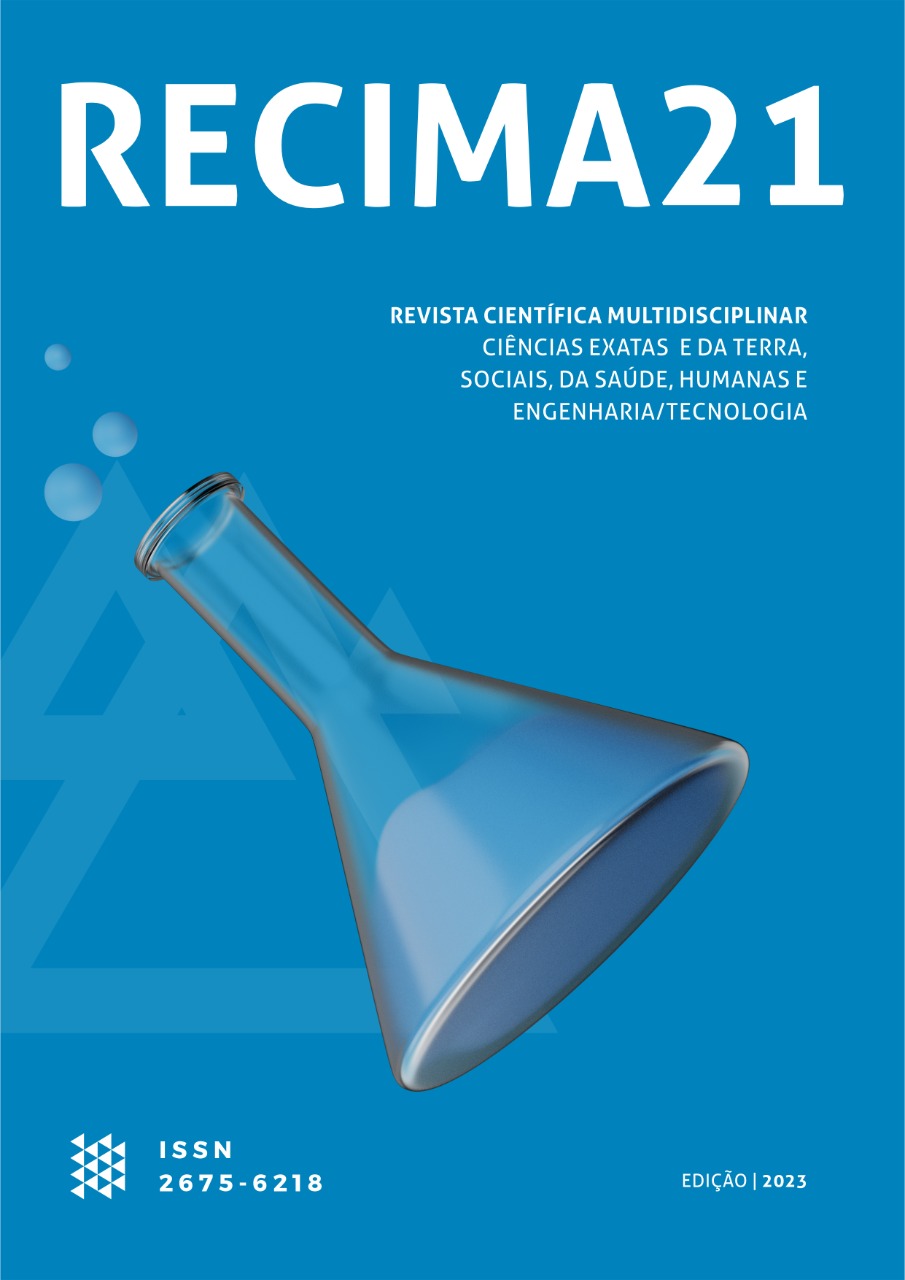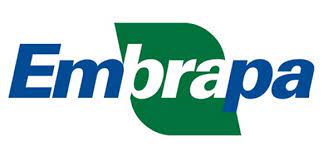CHARACTERIZATION OF THE TREATMENT PROFILE OF MELASMA AESTHETIC DYSFUNCTION IN WOMEN
DOI:
https://doi.org/10.47820/recima21.v4i6.3290Keywords:
Melasma is a commonly acquired pigmentaryAbstract
Melasma is a commonly acquired pigmentary dermatological dysfunction, more frequently observed in adult women and with phototypes II to IV. It presents as symmetrical and ill-defined hyperpigmented spots on the face, causing a low self-esteem of patients. This study aims to characterize and evaluate the treatment profile of aesthetic dysfunction melasma in women, through the pharmaceutical consultation carried out in a private pharmacy in the interior of southwestern Bahia. Pharmaceutical interviews were conducted with 30 women through a questionnaire on treatment, control and prevention of melasma. Expected results were obtained, and the major causes reported by these patients for this aesthetic dysfunction were: pregnancy (50%), sun exposure (33%) and stress (7%), when referring to the appearance, among the 30 women only (20%) stressed feeling good. Some protectors, in addition to having a broad spectrum and protection against UVA and UVB radiation and visible light, have depigmenting actives that contribute to the improvement in the appearance of the skin. The patients interviewed reported the use of dermocosmetics and nutricosmetics, and the actives that stood out the most were the use of bleaching agents such as: hydroquinone (15%), kojic acid (10%), tranexamic acid (5%), other actives such as antioxidant; vitamin C (10%) and moisturizers (5%) and products from industrialized brands such as Vichy® (3%) and Neutrogena® (2%). Of the nutricosmetics, the only one mentioned was Polypodium Leucotomus (5%). Sunscreen is the main tool in the prevention of skin blemishes and aging.
Downloads
References
ALLYNE, O.; et al. Tratamentos tópicos de Melasma. Revista Amazônia Science & Health 2021,Vol 9, Nº 2. Disponível em: ssets_involved_in_the_process_of_skin_stainless_clarifiaction_of_dercation. Acesso em: 23 outubro 2022.
AMANDA, S.; REBECA, G.; JOSÉ, N. Análise da atitude do consumidor frente a obtenção de dermocosméticos. Revista Ibero-Americana de Humanidades, Ciências e Educação-REASE: São Paulo, 2021. Disponível em: https://periodicorease.pro.br/rease/article/view/3070/1210. Acesso em: 18 de outubro 2022.
ANACLETO, Ana; et al. Melasma: Revisão Literária Sobre Tratamento E Prevenção.Centro Universitário Una Curso de Graduação em Biomedicina, Divinópolis, Minas Gerais, 2022. Disponível em:https://crbm1.gov.br/site2019/wp-content/uploads/2022/04/ARTIGO-DE-REVISA%CC%83O-MELASMA.pdf. Acesso em: 23 abril 2023.
BARBOSA, Kledson; et al. Melasma: tratamento e suas implicações estéticas. Infarma: Ciências Farmacêuticas, 2018. Disponível em: https://revistas.cff.org.br/?journal=infarma&page=article&op=view&path%5B%5D=2255&path%5B%5D=pdf. Acesso em: 23 abril 2023.
BEGONÃ, A. et al. Changes in Lutein Status Markers (Serum and Faecal Concentrations, Macular Pigment) in Response to a Lutein-Rich Fruit or Vegetable (Three Pieces/Day) Dietary Intervention in Normolipemic Subjects. Nutrients 2021. Disponivél em: https://www.ncbi.nlm.nih.gov/pmc/articles/PMC8538254/pdf/nutrients-13-03614.pdf. Acesso em: 26 outub. 2022.
Borges, Maysa; et al. Melasma: tratamento e suas implicações estéticas. Companhia Brasileira de Produção Científica, 2021. Disponível em: https://www.sapientiae.com.br/index.php/healthofhumans/article/view/CBPC2674-6506.2021.001.0002. Acesso em: 24 abril 2023.
BRENDA, S.; ISABELLA, C. et al. Uso de dermocosméticos no tratamento do melasma: Uuma Revisão Baseada em Evidências. Faculdade UNA de Cotagem: Cotagem, 2021. Disponível em: https://repositorio.animaeducacao.com.br/bitstream/ANIMA/20618/3/TCC%20DOC%202021.pdf. Acesso em: 18 outubro 2022.
CARTMEL, B. et al. Skin carotenoids are inversely associated with adiposity in breast cancer survivors. HHS Public Access:2020. Disponível em: https://www.ncbi.nlm.nih.gov/pmc/articles/PMC7409553/pdf/nihms-1610141.pdf. Acesso em: 23 outubro 2022.
DALFOVO, M.; LANA, S. et al. Métodos quantitativos e qualitativos: um resgate teórico. Revista Interdisciplinar Científica Aplicada, Blumenau, v.2, n.4, p.01- 13, Sem II. 2008. Disponível em: metodos_quantitativos_e_qualitativos_um_resgate_teorico-with-cover-page-v2.pdf(d1wqtxts1xzle7.cloudfront.net). Acesso em: 23 outubro 2022.
FLAVIA, P. Comparativo de ativo despigmentante em relação à hidroquinona no tratamento de melasma. Estética Em Movimento 2022, V1 Nº2. Disponível em: http://revista.fumec.br/index.php/esteticaemmovimento/article/view/7993. Acesso em: 23 outubro 2022.
Goes, Elisangêla; Pereira, Luís;. Melasma: Diagnóstico e Tratamento. Revista Científica Unilago, 2018. Disponível em: https://revistas.unilago.edu.br/index.php/revista-cientifica/article/view/111. Acesso em: 24 abril 2023.
HIGGINS, M. et al. Antioxidants and Exercise Performance: With a Focus on Vitamin E and C Supplementation. International jornal of Environmental Research and Public Health:2020. Disponivél em: https://www.ncbi.nlm.nih.gov/pmc/articles/PMC7697466/pdf/ijerph-17-08452.pdf. Acesso em: 23 outubro 2022.
JANÁDIA, S.; FELIPE, F;. Mecanismos de ação de ativos dermocosméticos envolvidos no processo de clareamento de manchas na pele. ResearchGate: 2019. Disponível em: https://www.researchgate.net/publication/331473471_Mechanisms_of_action_of_der. Acesso em: 23 outubro 2022.
KINBERLY, D. A; TIFFANY, L. M. E. An Open-Label Study Assessing the Efficacy and Tolerability of a Skincare Regimen in Subjects of Different Ethnicities with Moderate-to-Severe Hyperpigmentation. Jornal of Cosmetic Dermatology: 2021. Disponivél em: https://www.ncbi.nlm.nih.gov/pmc/articles/PMC9297970/pdf/JOCD-21-2497.pdf. Acesso em: 18 outubro 2022.
LETICIA, S.; et.al. O Uso Associado do Ácido Kójico e Ácido Glicólico como Alternativa à Hidroquinona no Tratamento de Melasma. Revista Científica Multidisciplinar Núcleo do Conhecimento. Ano 03, Ed. 01, Vol. 02. Disponível em: https://www.nucleodoconhecimento.com.br/saude/tratamento-de-melasma. Acesso em: 21 outubro 2022.
MARC, F. MC, CARTY.; et.al. Estratégias nutracêuticas para aliviar a fototoxicidade UVB. Revista Experimental Dermatology ADF: fevereiro de 2023. Disponível em: https://onlinelibrary.wiley.com/doi/10.1111/exd.14777 . Acesso em: 09 maio 2023.
OLIVEIRA, Aline; et al.Impacto do Melasma na Autoestima de Mulheres. Revista Multidisciplinar e de psicologia, 2019. Disponível em: https://idonline.emnuvens.com.br/id/article/view/2151. Acesso em: 23 abril 2023.
PEREIRA, G. et al. A utilização do ácido tranexâmico no tratamento do melasma facial - uma revisão integrativa.Repositório Universitário da Ânima:2020. Disponível em: https://repositorio.animaeducacao.com.br/handle/ANIMA/15864. Acesso em: 23 outubro 2022.
PIETOWSKA, Z. Understanding Melasma-How Can Pharmacology and Cosmetology Procedures and Prevention Help to Achieve Optimal Treatment Results? A Narrative Review. International Jornal of Environmental Research and Public Health:2022. Disponível em: https://www.ncbi.nlm.nih.gov/pmc/articles/PMC9564742/pdf/ijerph-19-12084.pdf. Acesso em: 18 de outubro 2022.
PURIM, K. et al. Fotoproteção, melasma e qualidade de vida em gestantes. Rev Bras Ginecol Obstet. 2012. Disponível em: https://www.scielo.br/j/rbgo/a/RSVtgnG5TWRZ4w73rHwNsch/?format=pdf&lang=pt. Acesso em: 23 outubro 2022.
RUFINO, Elisângela; et al. Tratamento Estético para o Melasma. Brazilian journal of surgery and clinical research-bjscr, 2020. Disponível em: https://www.mastereditora.com.br/periodico/20200408_122649.pdf. Acesso em: 24 abril 2023.
SCHORRO, J. et al. Influência de diferentes ativos em formulações de produtos dermocosméticos com fator de proteção solar. BrazilianJournal of Development. Braz. J. ofDevelop., Curitiba, v. 6, n. 5. Disponível em: https://ojs.brazilianjournals.com.br/ojs/index.php/BRJD/article/view/10409/8700. Acesso em: 23 outubro 2022.
VERA, S.; MÁRCIA, M.; et al. Melasma: Tratamento com método não invasivo. Revista Brasileira Interdisciplinar de Saúde: Brasília,2020. Disponível em: https://revistarebis.rebis.com.br/index.php/rebis/article/view/114/106. Acesso em: 21 outubro 2022.
YEON, L. The Low-Fluence Q-Switched Nd:YAG Laser Treatment for Melasma: A Systematic Review. Medicina:2022. Disponível em: https://www.ncbi.nlm.nih.gov/pmc/articles/PMC9323185/pdf/medicina-58-00936.pdf. Acesso em: outubro 2022.
Downloads
Published
How to Cite
Issue
Section
Categories
License
Copyright (c) 2023 RECIMA21 - Revista Científica Multidisciplinar - ISSN 2675-6218

This work is licensed under a Creative Commons Attribution 4.0 International License.
Os direitos autorais dos artigos/resenhas/TCCs publicados pertecem à revista RECIMA21, e seguem o padrão Creative Commons (CC BY 4.0), permitindo a cópia ou reprodução, desde que cite a fonte e respeite os direitos dos autores e contenham menção aos mesmos nos créditos. Toda e qualquer obra publicada na revista, seu conteúdo é de responsabilidade dos autores, cabendo a RECIMA21 apenas ser o veículo de divulgação, seguindo os padrões nacionais e internacionais de publicação.

 Clique para ver detalhes
Clique para ver detalhes 











